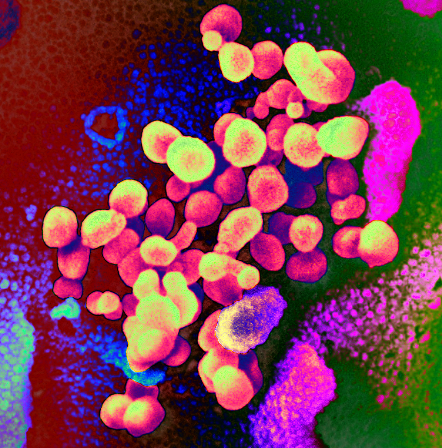COVID cause goes unaddressed
 An international task force has found COVID-19’s origins were “most likely zoonotic”, but the world has largely failed to deal with the cause.
An international task force has found COVID-19’s origins were “most likely zoonotic”, but the world has largely failed to deal with the cause.
Almost three years into the COVID-19 pandemic, the international Independent Taskforce on COVID-19 and Other Pandemics says the “most likely” cause of the virus was animal-to-human transmission.
The Independent Task Force is a group of internationally renowned scientists with diverse disciplinary expertise in human, animal, and public health, virology, epidemiology, wildlife biology, ecology, and EIDs. Twelve members were convened in June 2020 as a Task Force within the Lancet COVID-19 Commission.
The group’s report ‘Pandemic Origins and a One Health Approach to Preparedness and Prevention: Solutions Based on SARS-CoV-2 and Other RNA Viruses’ has been published in the Proceedings of the National Academy of Sciences.
Animal RNA viruses, including coronaviruses, have a long history of crossing species barriers to humans.
The risk of pandemics emerging increases when people and animals interact closely in new settings driven by land use and climate change, environmental degradation, the wildlife trade, population growth, and economic pressure.
Substantial newly published scientific evidence reviewed in the PNAS Perspective report strongly indicates that COVID-19 originated via a pathway similar to SARS-CoV, involving spillover from bats to intermediate animal hosts, then to people within the wildlife trade, leading to the first known cluster of COVID-19 in the Huanan Seafood Market in Wuhan, China, in December 2019.
Efforts to control and respond to the COVID-19 pandemic were hindered in many countries by politics, misinformation and disinformation, and a growing anti-science/anti-vaccine movement.
The experts say that the importance of critically evaluating the potential of a zoonotic link to wildlife is that it leads to implementable broad changes in policy and practice that can reduce the likelihood of similar occurrences in the future.
“The world has largely failed to meet the challenge to be better prepared to prevent or respond adequately enough to the next pandemic, whatever the aetiology,” says Independent Task Force chair, Dr Gerald T Keusch of the National Emerging Infectious Diseases Laboratory and Center for Emerging Infectious Diseases Policy and Research at Boston University.
“Our Task Force believes that the best way to address risk factors for future pandemics is a One Health approach that balances and optimises the health of people, animals, and ecosystems.”
The report focuses on scientific findings before and during the pandemic, and a historical review of multiple previous RNA virus outbreaks to identify critical intervention points to interrupt zoonotic transmission and translates this knowledge into recommendations based on a One Health approach to prevent or mitigate an outbreak, and if necessary, to respond rapidly to prevent epidemic or pandemic spread.
Royal Melbourne Hospital’s Dr Danielle Anderson, a Research Scientist at the Victorian Infectious Diseases Reference Laboratory (VIDRL) at the Peter Doherty Institute for Immunity and Infection (Doherty Institute), is a member of the Independent Task Force.
Dr Anderson explains that the COVID-19 pandemic introduced or highlighted scientific disciplines, such as virology and epidemiology, to the broader community.
“Although the ‘lessons learned’ are certainly not new to scientists, it is our responsibility to ensure that these lessons and our recommendations are better understood and are more readily embraced and acted upon to protect communities, animals and ecosystems now and in the future,” Dr Anderson said.







 Print
Print